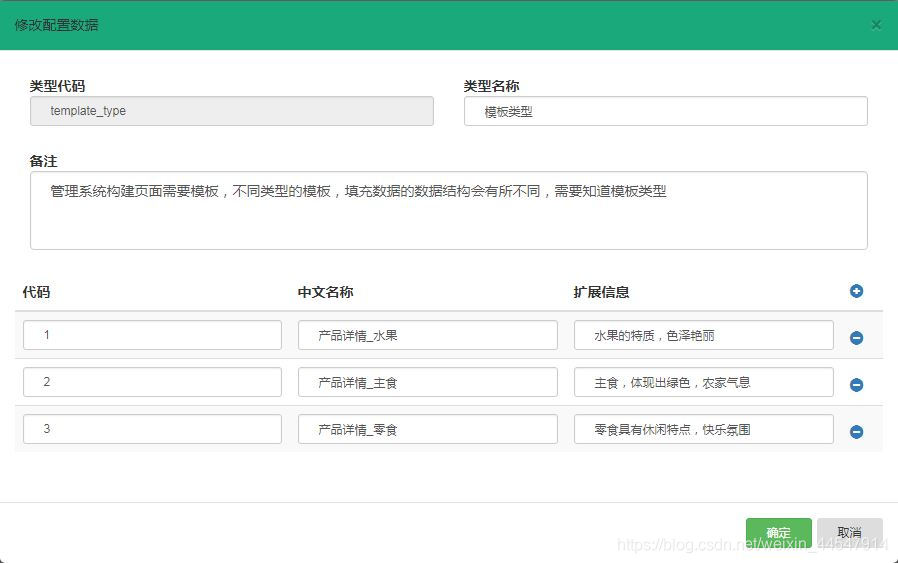今天处理数据批量的更新,场景是这样子的,web站管理的字典功能,需要添加一个记录的整体描述,以及详细内容的描述。一个字典整体概述只有一组信息,但是其详细内容,会有很多项,不确定。
这个场景,在关系型数据库操作中,就是典型的1vN的问题,即一对多的问题。
做内容修改时,涉及到批量的更新过程。这里,只针对具体的问题描述细节,不过多介绍字典的设计。
字典的查询没有问题,mybatis的mapper函数如下:
<resultMap id="FullConfResultMap" type="com.tg.ecs.system.model.SysConfElement" >
<!--
注意,这种基于has-one,以及has-many的模式,会造成结果映射出错。个人理解,这种复合查询中,顶层元素中
必须有基本数据类型的成员,否则会出现结果个数映射转换失败。
<association property="scc" javaType="com.tg.ecs.system.model.SysConfCategory">
<id column="id" property="id" jdbcType="INTEGER" />
<result column="code_name" property="codeName" jdbcType="VARCHAR" />
<result column="info_name" property="infoName" jdbcType="VARCHAR" />
<result column="remark" property="remark" jdbcType="VARCHAR" />
<result column="who_cm" property="whoCm" jdbcType="INTEGER" />
<result column="create_time" property="createTime" jdbcType="TIMESTAMP" />
<result column="update_time" property="updateTime" jdbcType="TIMESTAMP" />
<result column="in_use" property="inUse" jdbcType="BIT" />
</association>
-->
<id column="id" property="id" jdbcType="INTEGER" />
<result column="code_name" property="codeName" jdbcType="VARCHAR" />
<result column="info_name" property="infoName" jdbcType="VARCHAR" />
<result column="c_remark" property="remark" jdbcType="VARCHAR" />
<result column="who_cm" property="whoCm" jdbcType="INTEGER" />
<result column="create_time" property="createTime" jdbcType="TIMESTAMP" />
<result column="update_time" property="updateTime" jdbcType="TIMESTAMP" />
<result column="in_use" property="inUse" jdbcType="BIT" />
<collection property="scds" ofType="com.tg.ecs.system.model.SysConfDetail">
<result column="did" property="id" jdbcType="INTEGER" />
<result column="code" property="code" jdbcType="VARCHAR" />
<result column="info" property="info" jdbcType="VARCHAR" />
<result column="d_remark" property="remark" jdbcType="VARCHAR" />
<result column="category_id" property="categoryId" jdbcType="INTEGER" />
</collection>
</resultMap>
<select id="selectOneFullConf" resultMap="FullConfResultMap">
select tscc.id, tscc.code_name, tscc.info_name,
tscc.remark as c_remark,
tscc.who_cm, tscc.create_time, tscc.update_time, tscc.in_use,
tscd.id as did,
tscd.code, tscd.info,
tscd.remark as d_remark,
tscd.category_id
from sys_conf_category tscc, sys_conf_detail tscd
where tscd.category_id = tscc.id
and tscc.id = #{cid, jdbcType=INTEGER}
</select>
这里,我的SysConfDetail的POJO代码如下:
public class SysConfDetail {
private Integer id;
private String code;
private String info;
private String remark;
private Integer categoryId;
public String getInfo() {
return info;
}
public void setInfo(String info) {
this.info = info == null ? null : info.trim();
}
public String getRemark() {
return remark;
}
public void setRemark(String remark) {
this.remark = remark == null ? null : remark.trim();
}
public Integer getCategoryId() {
return categoryId;
}
public void setCategoryId(Integer categoryId) {
this.categoryId = categoryId;
}
public String getCode() {
return code;
}
public void setCode(String code) {
this.code = code;
}
public Integer getId() {
return id;
}
public void setId(Integer id) {
this.id = id;
}
}
就是查询中collection的数据类型。
我的设计中,字典的操作是下面这个样子的,请看下图

当我更新上图中的内容后,点击保存,我的WEB应用后台总是爆出一个很奇怪的问题:
分析了错误日志,开始总是不知道什么原因,以为是其中的info字段乱码。分析自己的update的SQL语句:
<update id="updateOneConfDetail" parameterType="java.util.List">
<!-- 注意这里,index以及open,close没有用,所以就不做配置了,默认的 -->
<foreach collection="scds" item="ocd" separator=";">
UPDATE sys_conf_detail
<set>
code = #{ocd.code},
info = #{ocd.info},
remark = #{ocd.remark}
</set>
<where>
id = #{ocd.id, jdbcType=INTEGER} and category_id = #{ocd.categoryId, jdbcType=INTEGER}
</where>
</foreach>
</update>
上面的SQL语句,红色部分separator=“;”,是重点。 回想到官方的描述,关于一行SQL语句中执行多个子SQL的时候(比如这里,MySQL默认是用分号最为一个语句的结束),会出问题。请参考MySQL官方文档描述
allowMultiQueries
Allow the use of ';' to delimit multiple queries during one statement (true/false), defaults to 'false', and does not affect the addBatch() and executeBatch() methods, which instead rely on rewriteBatchStatements.
Default: false
Since version: 3.1.1
这个是问题的关键,我们可以在jdbc的地址url中添加一下这个allowMultiQueries=true的参
jdbc.url=jdbc\:mysql\:
修改后,再次启动我的应用,就不再报上述的exception问题了。
总结:
mysql数据库,要在一个statement中执行多条sql子句的时候,需要打开这个功能,默认该功能是关闭的,也就是在url地址栏开启allowMultiQueries=true.


